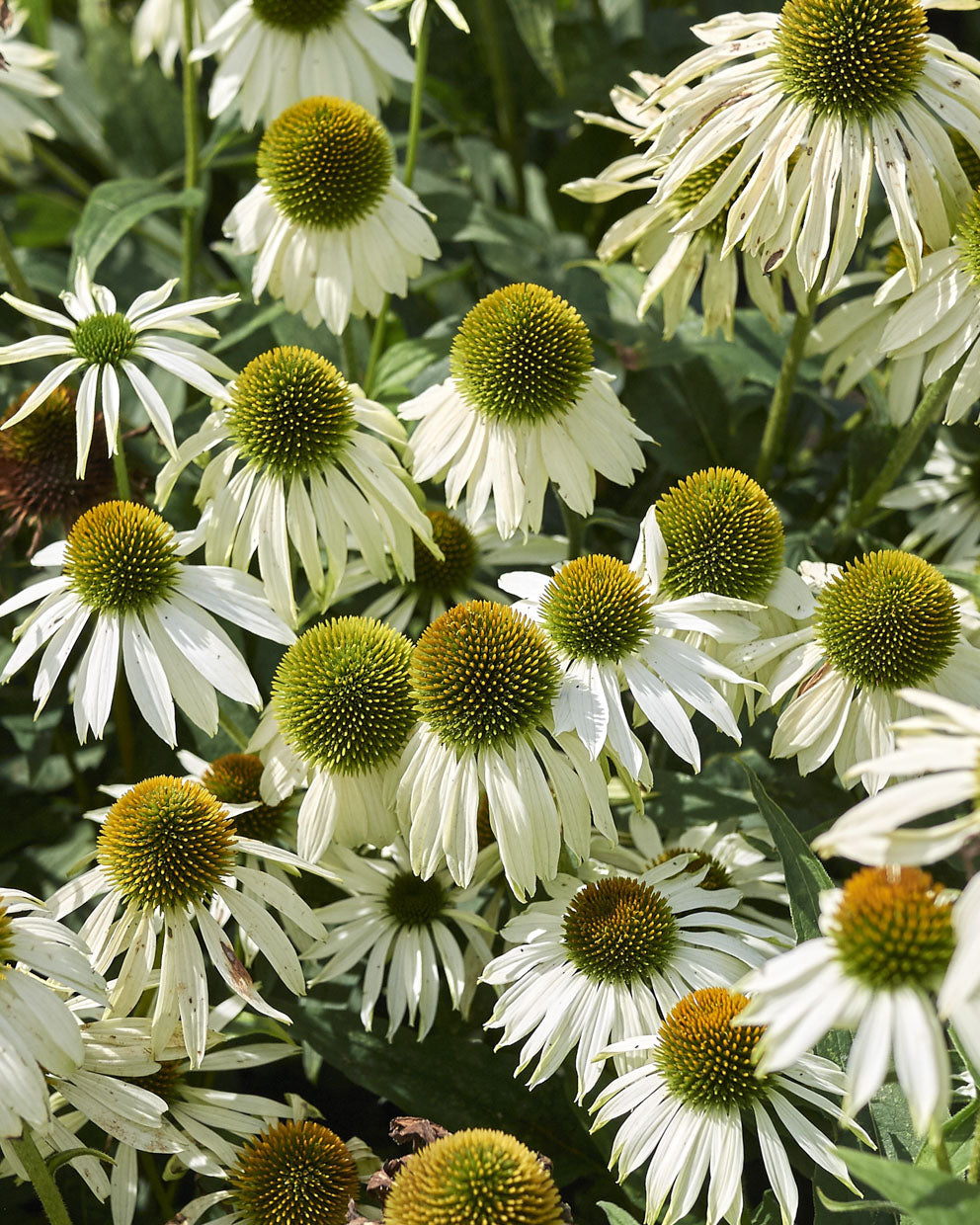
Purple coneflower
INCI: ECHINACEA PURPUREA ROOT EXTRACT
The purple coneflower (Echinacea purpurea), also known as the copper flower or red coneflower, belongs to the daisy family (Asteraceae). . It has its origins in North America and can still be found wild there today. Cultivation for industry mainly takes place in Europe. Its name, which comes from Greek, means “hedgehog,” which is due to the spiky texture of the flower head. The plant, which is over a meter high, has an upright stem and egg- or heart-shaped leaves. The bright flowers are often white, yellow, orange or reddish. The rhizome of the purple coneflower with its numerous secondary roots is rich in valuable ingredients, which is why it was used as a medicinal herb by the natives of North America centuries ago.
Effect
The purple echinacea root has been classified by the Herbal Medicinal Product Committee (HMPC) as a traditional herbal medicine for internal use and is particularly rich in alkamides, caffeic acid derivatives, polyacetylenes and polysaccharides. The root is best known for naturally strengthening the body's defenses, which is why it is particularly suitable for cold symptoms. It has a positive effect on the immune system and stimulates the self-healing powers. Because of its immune-stimulating effect, we also use this power root in our mouth spray.
Studies
Mishima , S., Saito, K., Maruyama, H., Inoue, M., Yamashita, T., Ishida, T. & Gu, Y. (2004). Antioxidant and Immuno-Enhancing Effects of Echinacea purpurea. Biological and Pharmaceutical Bulletin, 27(7), 1004–1009.
Stanisavljević, I., Stojičević, S., Veličković, D., Veljković, V. & Lazić, M. (2009). Antioxidant and Antimicrobial Activities of Echinacea (Echinacea purpurea L.) Extracts Obtained by Classical and Ultrasound Extraction. Chinese Journal of Chemical Engineering, 17(3), 478–483.

